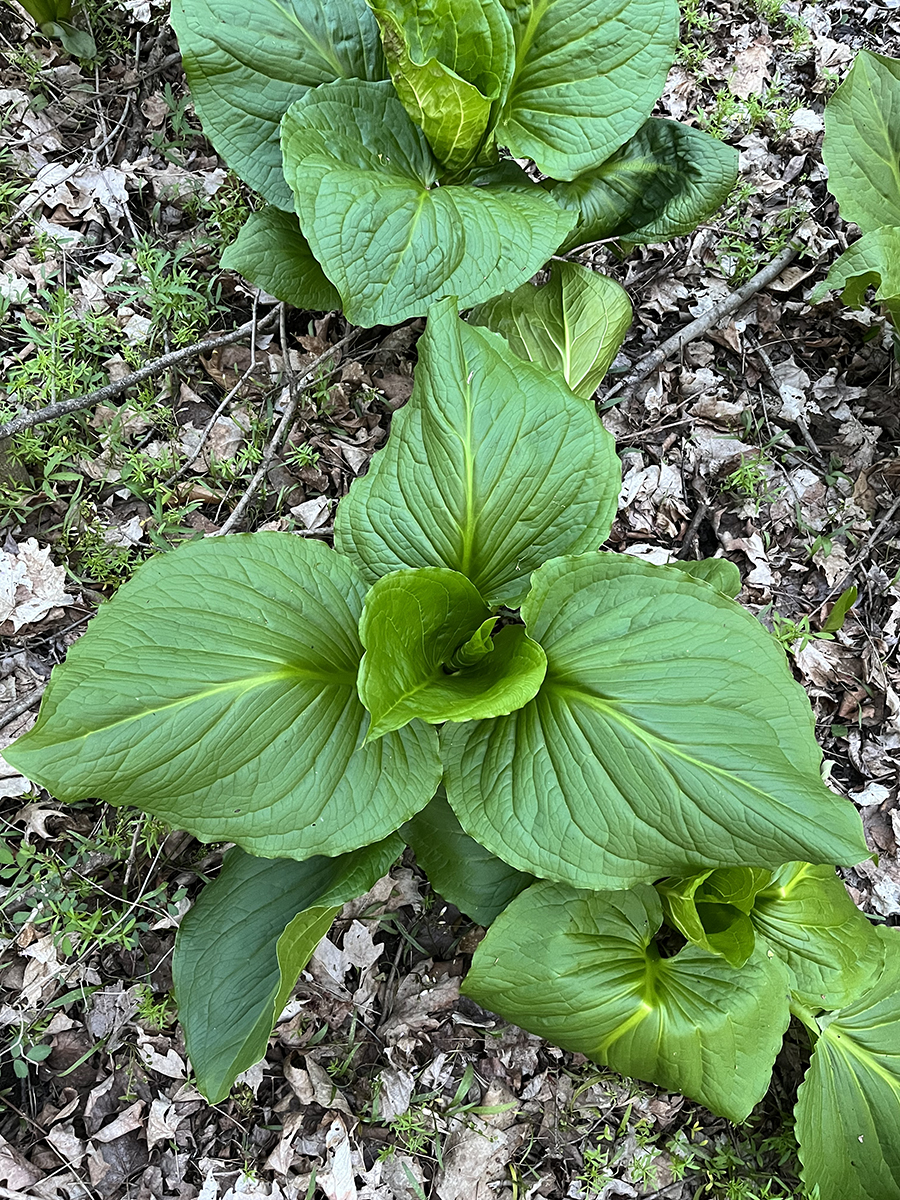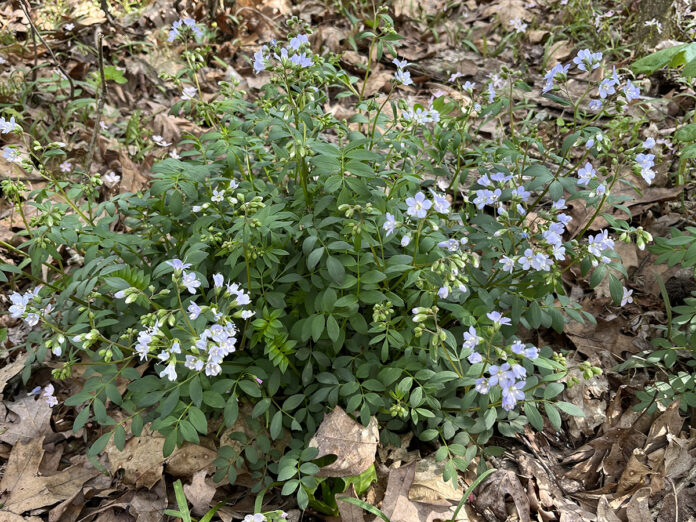As much as I love to travel and experience new places, there is something sacred about the slow moments at home. As spring continued to be finicky in our neck of the woods, my family and I found comfort and even excitement in the seemingly mundane moments of daily life.
After finding ramps growing in two separate parks, I tried again to find them on my property. Ramps usually are found growing in moist soil under deciduous trees.
Instead of the garlicky-scented wild onion I was seeking, I found a grove of skunk cabbage. The word “grove” seems inadequate. The plant was abundantly growing in every nook of the valley.
I could appreciate the bright green color in the dark brown and barren landscape. Other than finally seeing green, it was hard to get excited about skunk cabbage, especially when I was hoping to find ramps.
Unique

Skunk cabbage has one very unique characteristic, it produces its own heat. The young plant emerging in early spring uses oxygen to produce heat. Starch in the root combines with oxygen which releases energy in the form of heat. Amazingly, the plants can melt snow and grow in frozen ground.
Despite the unpleasant aroma, skunk cabbage was a food source for Native Americans. Just like using every part of a buffalo, Native Americans were able to use the entire plant without any waste. The roots were dug up and then roasted for food.
Skunk cabbage would not have been eaten raw because it contains oxalic acid, an organic compound, that causes discomfort in the mouth. Instead, the roots were boiled in a process that required several water changes.
The large leaves were used as a wrapping layer to keep moisture in other food being baked. The roots were also used medicinally to treat respiratory ailments and skin conditions.
Benefits

Most herbivores avoid skunk cabbage, most likely due to the smell, but it is beneficial to many animals. Bears and hungry deer will eat the young plants when they first emerge in the spring. Snapping turtles are another species hungry after a long, cold winter that will munch on the leaves.
In direct contrast to large bears, skunk cabbage makes an impact on a much smaller scale. Pollinators such as flies and gnats along with butterflies, bees and beetles are drawn to skunk cabbage. Upon contemplation, I prefer to picture a butterfly transferring pollen on lavender. Regardless, the circle of life continues in the forest with stinky skunk cabbage.
Ephemerals
Along the trail, I couldn’t help noticing spring ephemerals popping up. Yellow trout lilies, wild geranium, Jack in the Pulpit and others were sprinkled along the edges of the trail. My prized Jacob’s Ladder plant is now a cluster of three plants, the original and two younger ones. It was slightly hit by frost but is making a recovery.
We had a few days of beautiful magnolia tree blooms, along with pink clustered crabapple blossoms, but a hard frost halted the beauty show. I was very thankful when my oldest son cleaned out debris from flower beds. He is developing a knack for landscaping and I am not complaining.
Both boys had some early mornings in the spring. They scouted for turkeys and then the actual hunt. Their endless practice of turkey calls has not produced a dinner for the family yet.
Spring fishing
Fly fishing was another activity in early spring. My husband and both boys traveled north to Lake County for steelhead fishing. I’m not mentioning any names but there were some strange scrapes and snags from the fly catching something much larger than a steelhead.
An unusually warm weekend allowed us to take our fishing boat on Mosquito Lake. The high temperatures were a foreshadowing of summer. Crappies were hitting along the causeway in the northern section of the lake, along with a few perch and largemouth bass.
It has been a long time since we had that much success fishing on Mosquito Lake. The water was calm and a beautiful striated sunset was the end to our unexpected preview of summer on the lake.
I can’t help but share in the excitement of the school year ending and summer approaching. It’s been a long winter in our area, along the Pennsylvania border.
It feels good to be outside and experiencing a fresh, new spring. In the words of Lady Bird Johnson, “Where flowers bloom, so does hope.”













